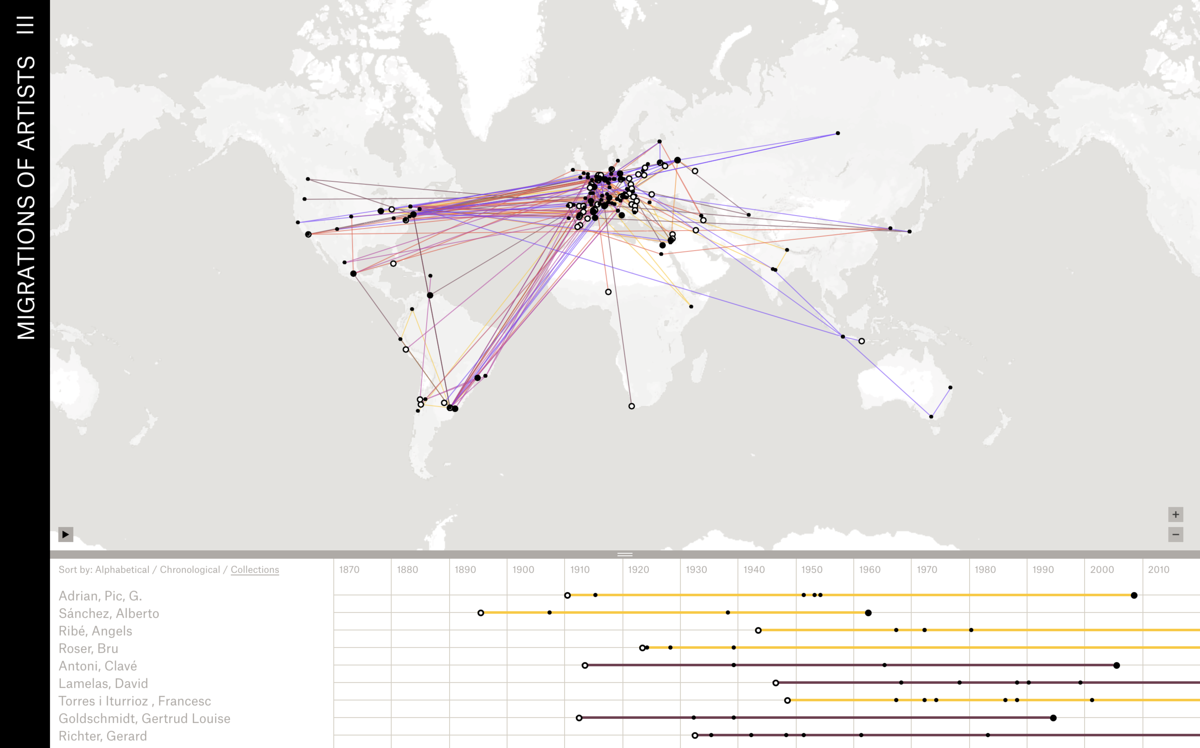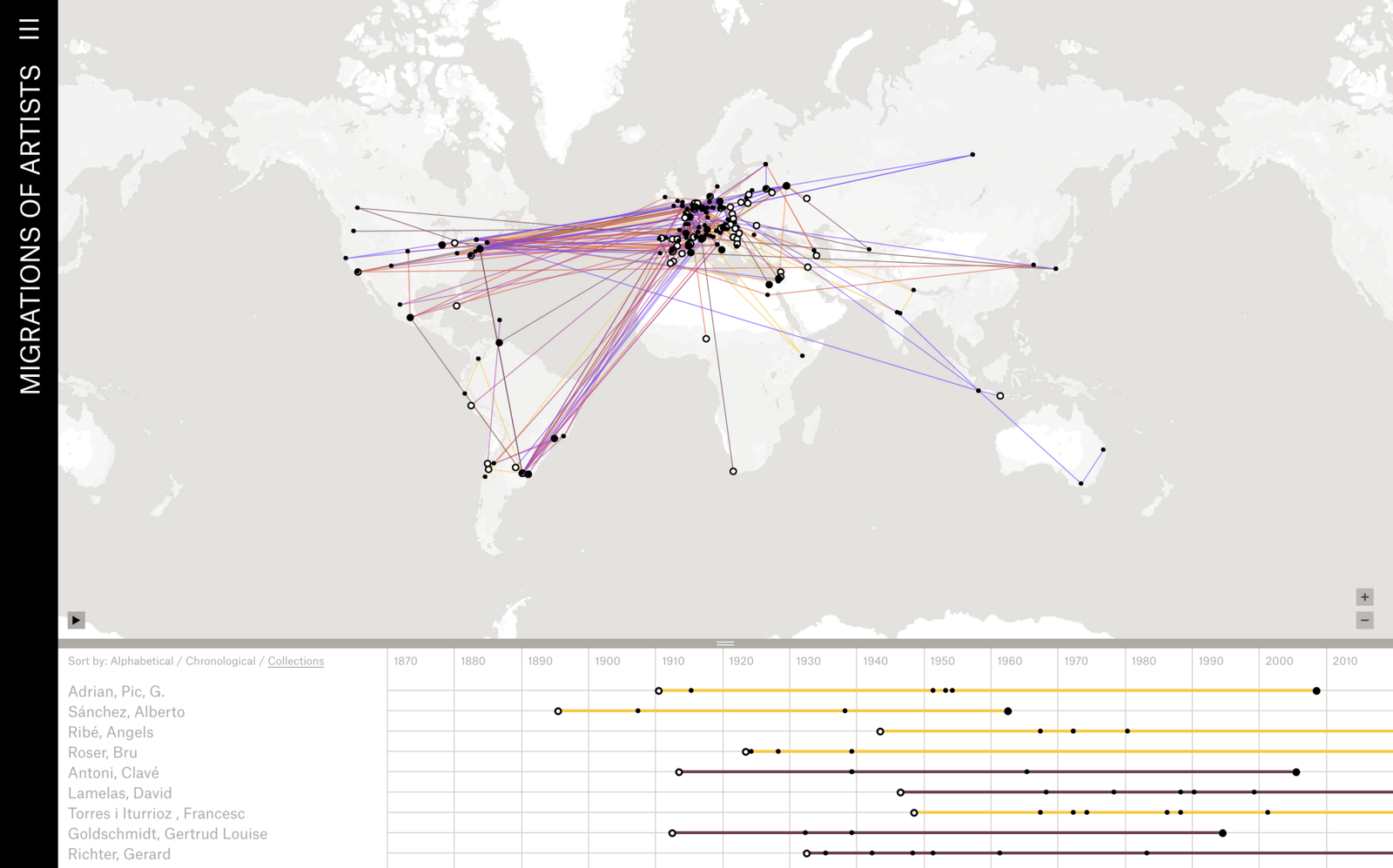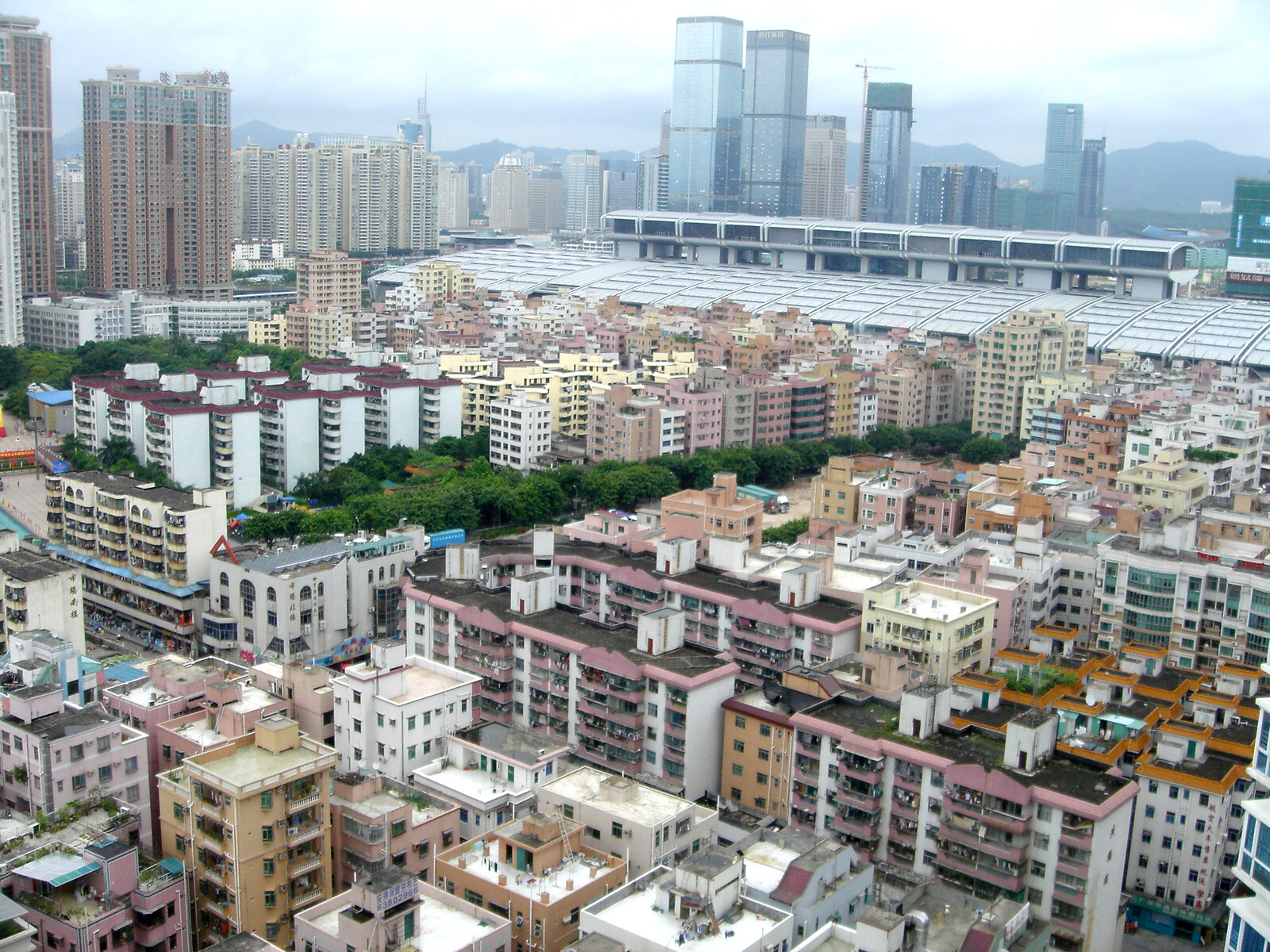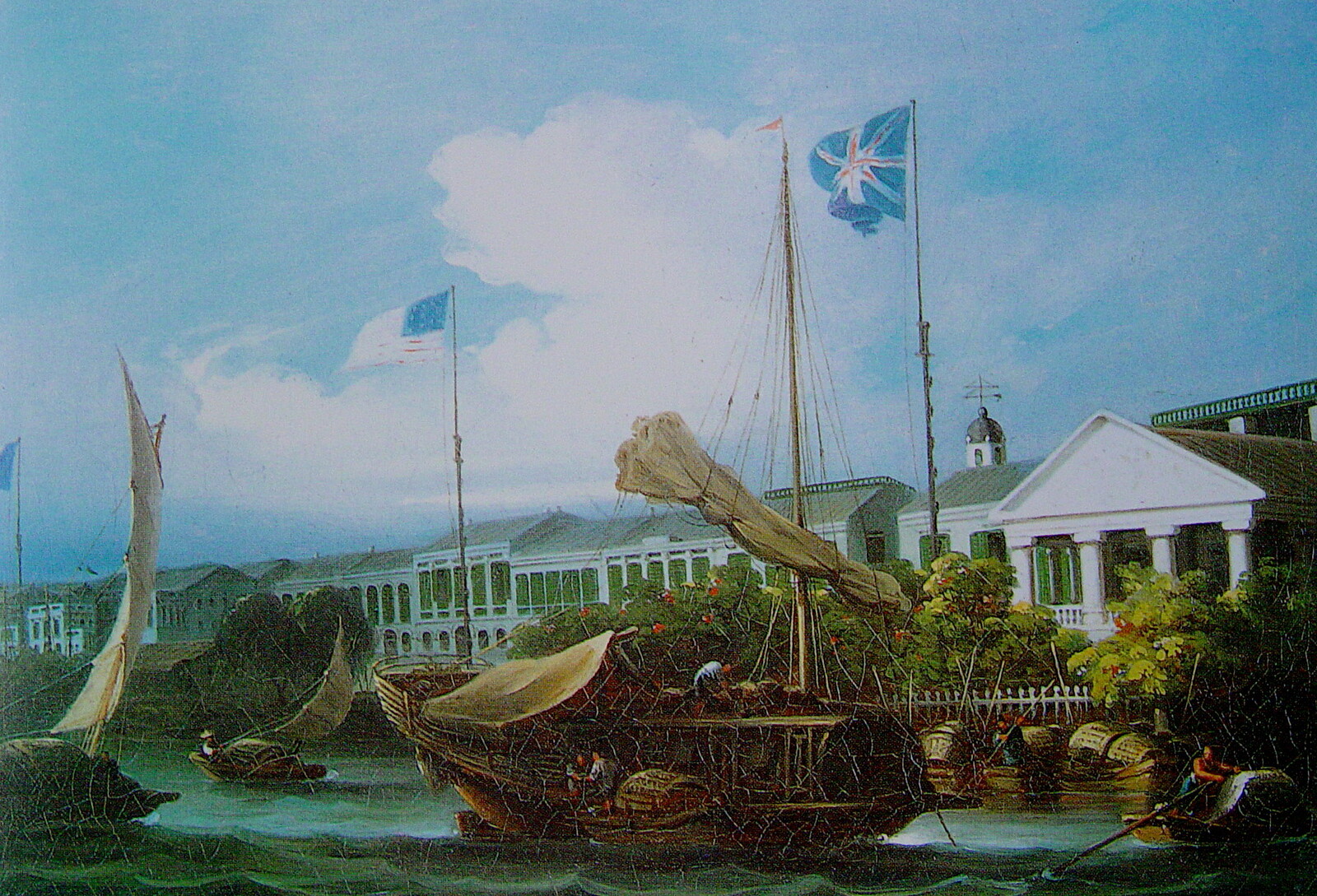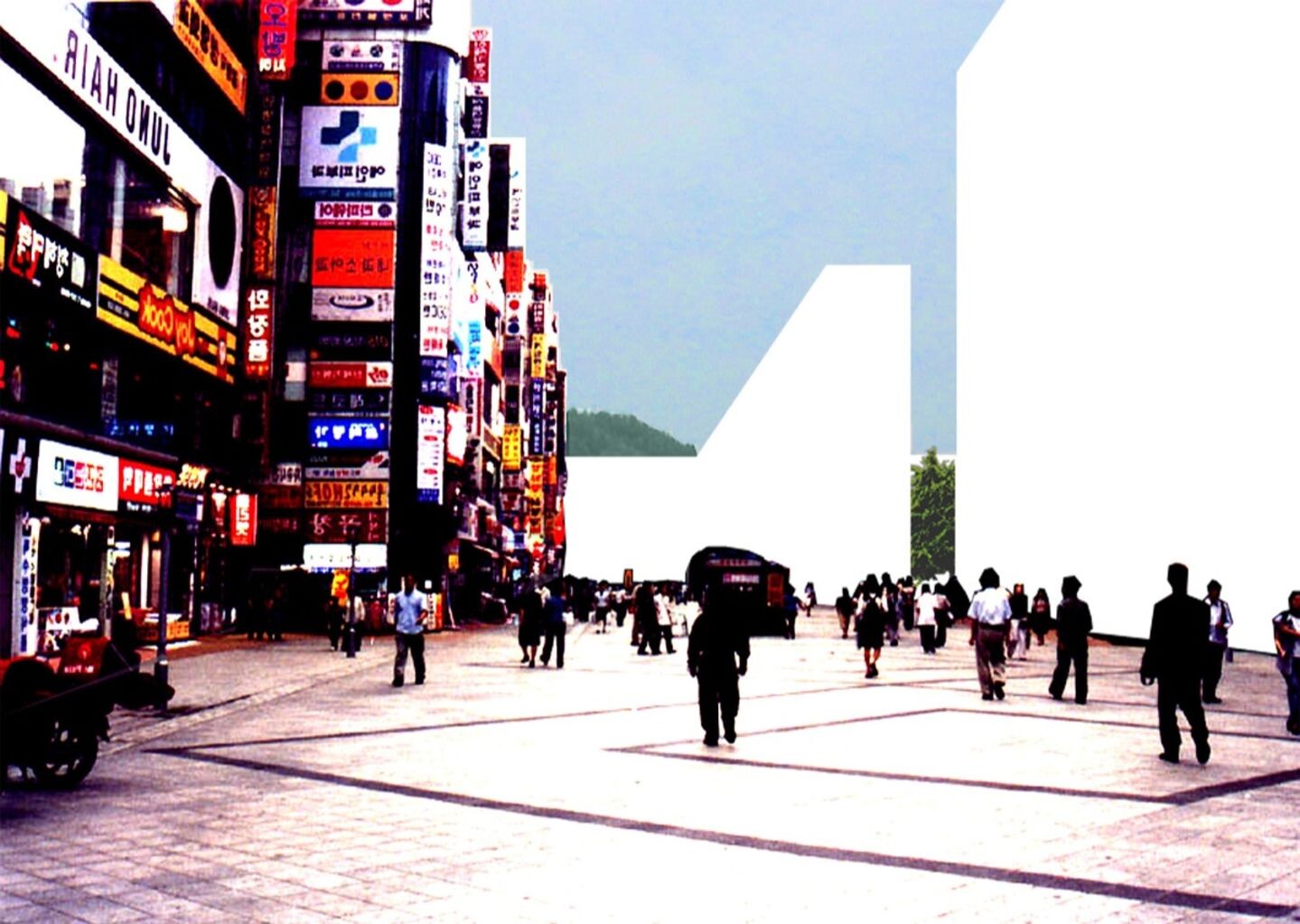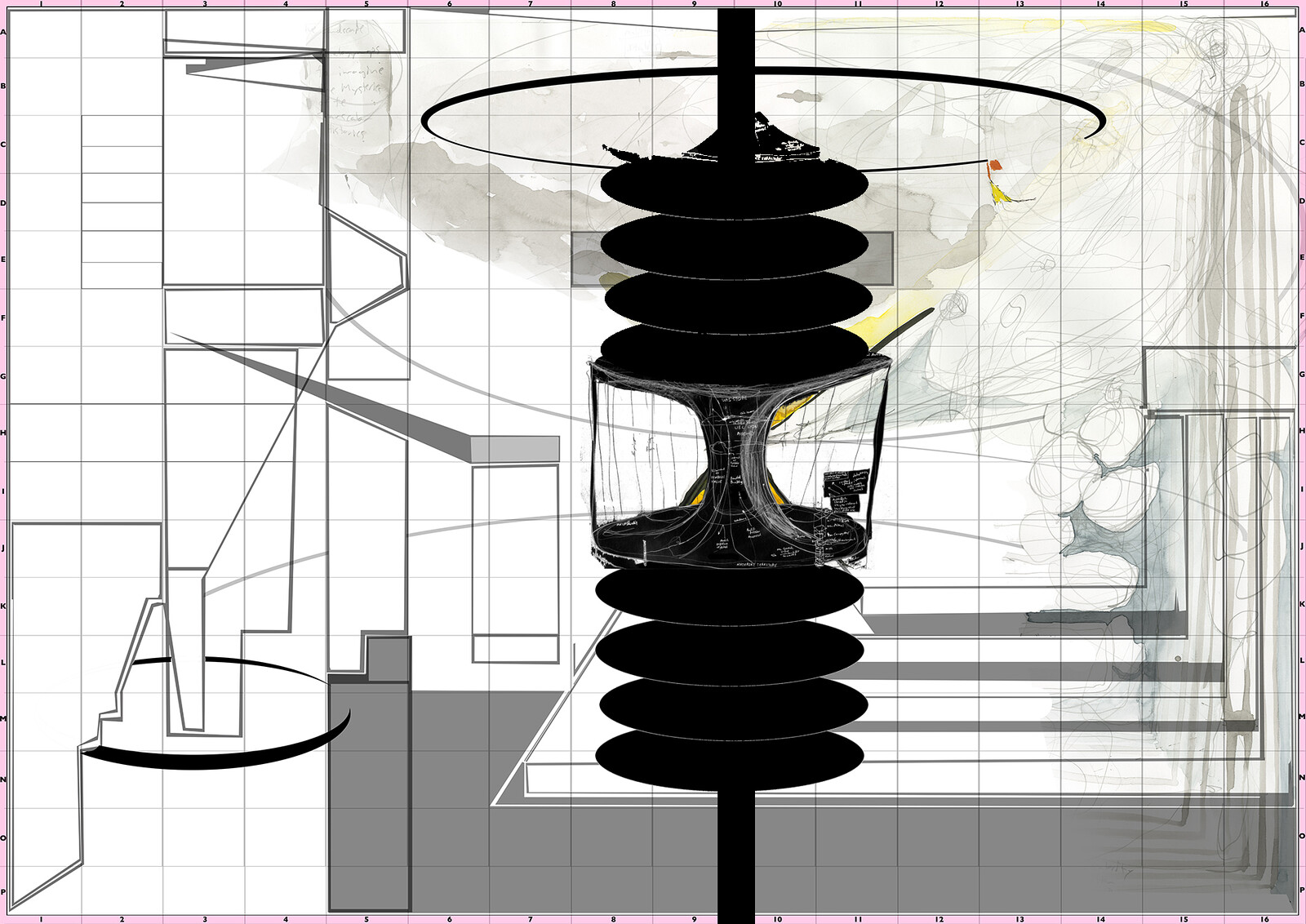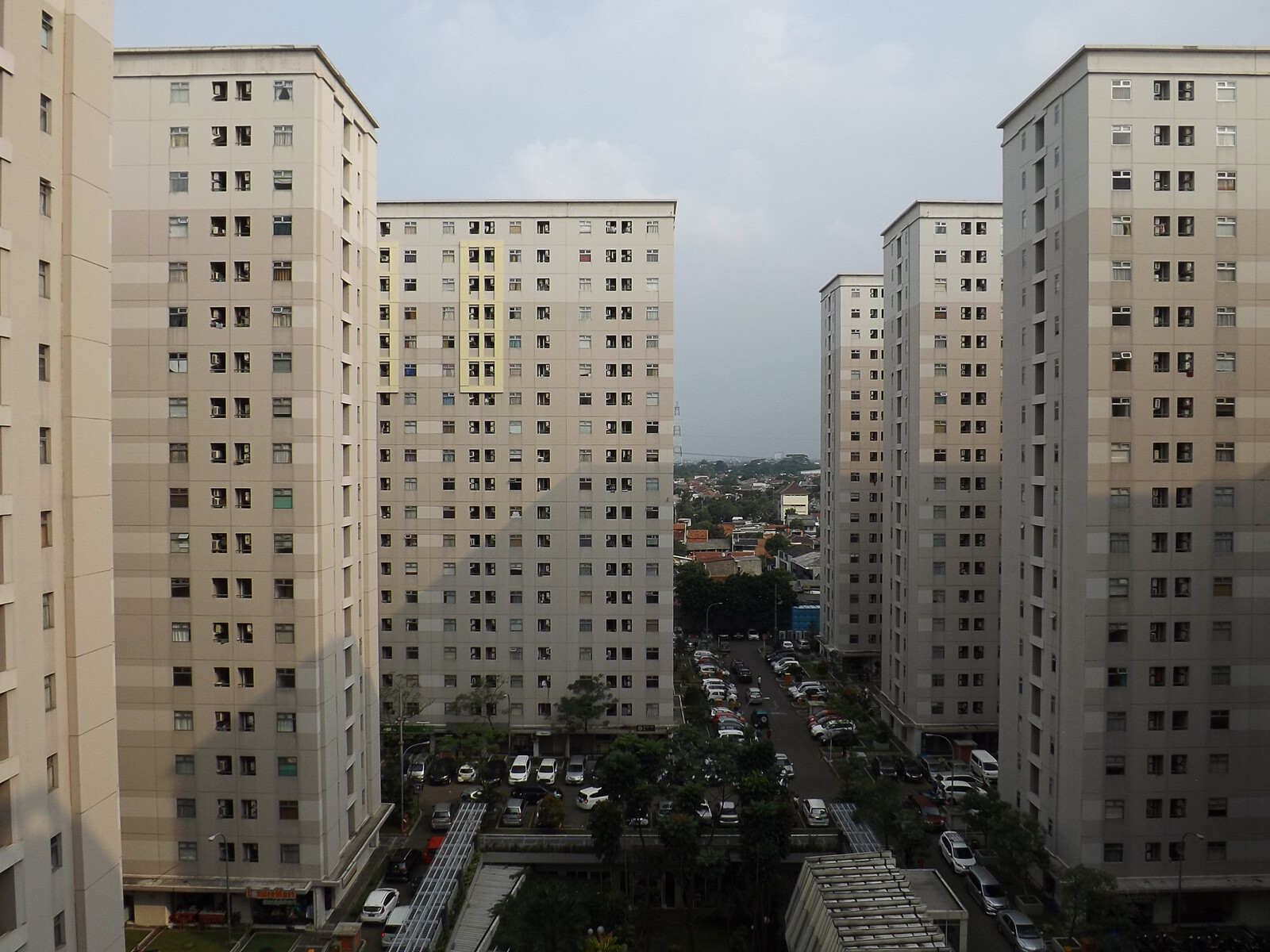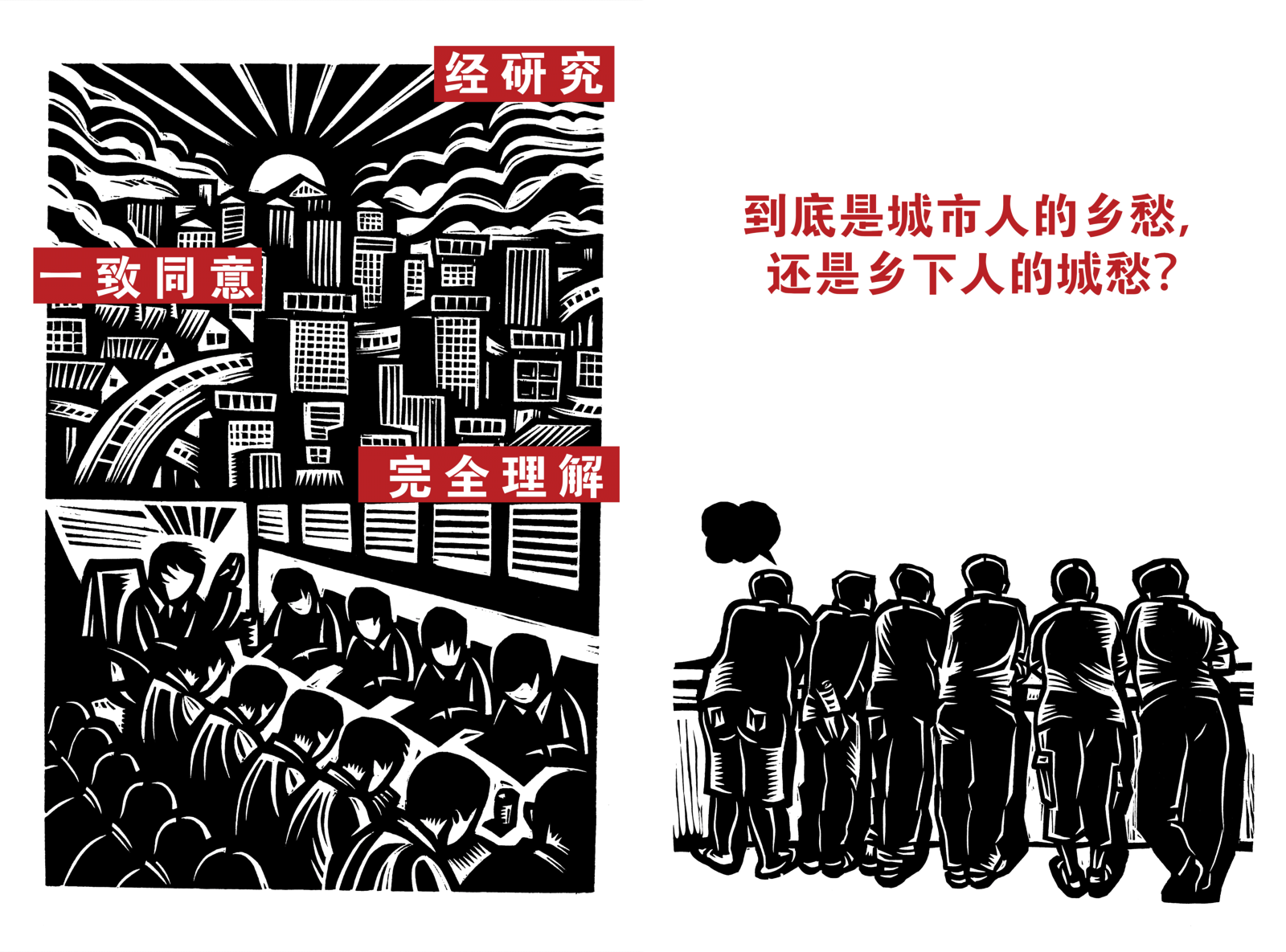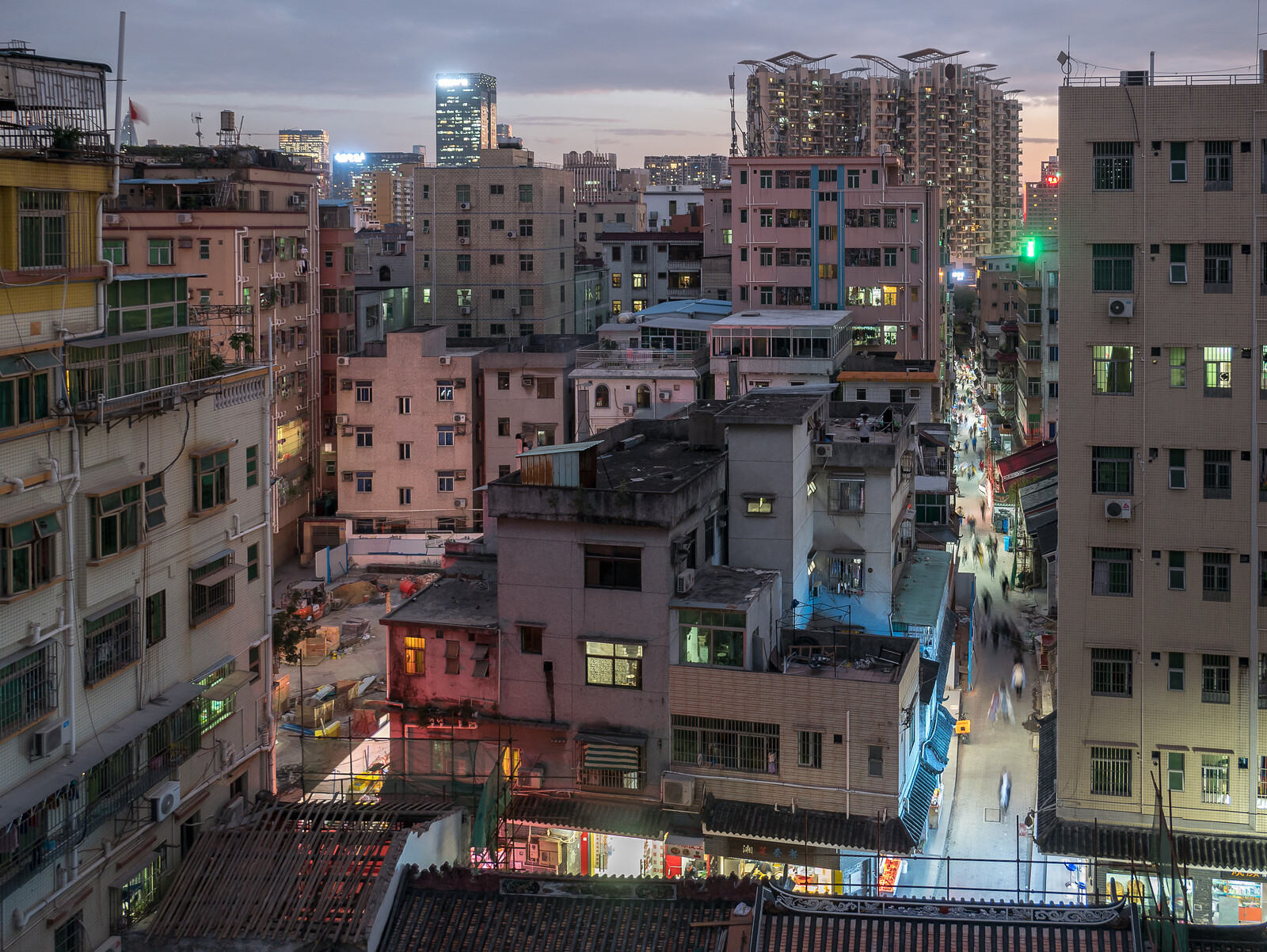The early boom in art biennales coincided with the post-1989 malaise of internationalism and a tentative burst in cosmopolitan thinking. It was also caught in massive rebranding of cities as attractors of global capital and hubs for creative economies. Between the hype and massive investment in arts infrastructure there has been a spectacular growth in contemporary art as an event. Yet both contemporary art and the Biennale phenomenon have had an uneasy relationship to nations and regions. The topography of cities and the will to globality is more congruent with the post-national or transnational context of contemporary art. Hence, artists have aligned themselves with specific cities, or have sought to situate themselves in the coupling of cities, and aspired to be part of a new cosmopolitan networking of urban centers. Since 1989, the status of the city has assumed a new significance that includes an often unspoken relationship between symbolic and financial capital, which prompts us to look again at the need for cosmopolitan spaces.
Cities are formed out of the need for security, in the pursuit of commerce, and through the expression of culture. The idea that the city, or at least a sacred portion of it, is a place of sanctuary is equally ancient. The city offers protection against invaders, fosters industries for processing raw products, and through the evolution of rituals and protocols it distinguishes itself from the ways of the barbarians. It is thus a place of fortification, assembly, and deliberation. By allowing people, things, and ideas to come together in a concentrated manner, it stimulates exchange, translation, and innovation. If we are to uphold that these values are best served in a concentrated form, and that the intensities afforded by urban life are maximized through a careful oscillation between proximity and distance, then we need to consider who are the invaders and barbarians that threaten the contemporary city? Does the revolution need to happen in the city in order for it to, as Marx and Engels suggested, rescue us from the “idiocy” of rural life?
Today, cities are interpenetrated by a complex array of global and local forces that are creating new divisions and hierarchies. Threats facing the contemporary city are not necessarily found from rival neighbors, or even in the internal difference between the urban and rural demands. Over two decades ago, Saskia Sassen commented that global cities like New York, London, and Tokyo have more in common with each other than with other cities in their immediate regions.1 As this globalizing trajectory has intensified, there are now even more cities that are reconfiguring their priorities as they are becoming decoupled from their states. This may sound odd in Singapore, a place where the city is both state and region, but the island polis is both an outlier and paradigmatic version of the global city. Everywhere else the contradictions of globalization and urbanization are more pronounced.
The former mayor of New York City, Michael Bloomberg recently stated that Brexit was the most stupid thing a nation has ever done, with the exception of voting for Trump. While the President’s personal tower is in New York, his political base lies in that territorial rump known as “fly over America.” The turn to a populist right-wing and neo-nationalist agenda, which has also been evident in regions such as the former East Germany and deindustrialized pockets of France, is now seen as the most pronounced threat to global capital and urban civility in the West. Interior regions are splitting further and further way from the coastal megacities and metropolises around the world. Is this what the West has come to a show down between Trump and Clinton? City vs. Country? These are two wrong options. They are not equally bad, just as Macron is not the same as Le Pen. However, the reduction of choices only confounds those who are right to register that their lives are hollowed out by ontological insecurity and environmental degradation.
Neoliberalism did a stunning job in decoupling state power from economic control. In the name of freeing the market to deliver services, it transferred state-controlled assets to private companies, and in the name of deregulation it commodified infrastructure for public service, environmental care, and social protection. However, it failed to provide a suitable platform for the deliberation and redistribution of public goods, and it effectively produced levels of inequality that the West has not seen since the 1910s and 1920s. In short, almost all the gains of the welfare state, democratic accountability, and human rights have been rolled back, and new environmental threats, xenophobic fears, and illiberal modes of governance have become indistinguishable from each other.
Modernity was driven by technical transformations and massive migrations. Movement underpinned the era of industrialization and increased the mixture of peoples and their cultures. The rhetoric of globalization was thus stitched into the modern promise of mobility. Diasporas and networks have created alignments which exceed the conventional structures and feelings of belonging within the parameters of the nation state. These brutal changes were often glossed by the success stories that either celebrated the heroic examples of migrants rising from rags to riches, or trumpeted the huge leaps forward in life chances. Globalization built upon this modernist commitment to a forward momentum and the transgression of borders, standing as it did against closed markets, impatient with institutional procedures, and opposing inhibitions of traditional cultural values. Globalization promised to mobilize vitality and innovation through willful disruption. Yet how many have been enlivened, enriched, and emancipated by this process? Has the nation really withered away, or does it matter even more than ever before?
A decade ago many of us expressed a wide-eyed optimism about the possibilities of mobility to extend the forms of cultural exchange and cross-cultural translation. As Craig Calhoun noted, “all the talk was about cosmopolitanization of everyday life, cosmopolitan democracy, and the ever-greater advance of supra-national unity in Europe.”2 New communication technologies and significant decline in the cost of travel also fostered a kind of naïve cosmopolitanism:
So now that everyone is able to journey to distant countries, to experience other cultures and traverse geographical barriers; now that obstacles in the form of political systems, languages, cultures, differences between countries and regions are disappearing, and perpetual transformation is perhaps the one constant of our contemporary modernity, especially now that the foundations of national governance, in the sense of belonging to a nation-state, is becoming increasingly weaker. Nationalism is regarded as a feeling that doesn’t fit the time, and people are starting to construct a new identity based on the city where they live. This is what characterizes the world we live in and artists are undoubtedly one of the social classes that possess more freedom of movement in this era.3
In a relatively short time, such emphatic declarations have disappeared. Sociologists, political theorists, and curators who predicted the appearance of a post-national identity—one that could find sanctuary in the cosmopolitan city, or generate new horizons of connectedness through globalizing networks—have today adopted more circumspect perspectives and redefined the relationship between mobility and belonging. The discourse is now more jagged as the violent extremes have come closer to our attention. In terms of political rights, the proliferation of flexible citizens and stateless refugees mark the two ends of this spectrum. In relation to the cultural condition, there is a growing despair that mobility is fueling the McDonaldization of culture. When we see that humanitarian challenges have stumbled in the face of the neo-militarization of border controls, or note that new thinking on cultural hybridity has also stoked old fantasies of ethnic purity, there is a strange sense of how the political is merging with the cultural.
The political backlash against globalization has been interpreted as the end of the cultural ideals of cosmopolitanism. This is not just a consequence of the debunking of the hype on mobility and hybridity that, in some instances had blurred deeper inequalities and produced a chain of equivalence between people with platinum frequent flyer cards and stateless refugees. It is more fundamentally linked to the material and symbolic questions of building a viable community and defining the forms of solidarity that can deliver, not just promise, institutions for the distribution of pleasure, justice, and opportunity. Unless we take comfort in platforms like Facebook, we cannot believe that globalization is aiding the cosmopolitanism of society. On the contrary, the global condition is now registered not just in terms of accelerated flows, but also as a looming anxiety over endless crisis. In Greece, for instance, crisis has become a way of life, and this is just the tip of a wider freeze of the political imagination. Throughout the world, one crisis merges with another. Causes that lay in economic inequity are morphed with anti-humanitarian consequences. It no longer makes sense to talk about a crisis. Crisis is not only plural, it is ambient.
However, globalization and cosmopolitanism are neither equal nor co-dependent. This would be obvious to Immanuel Kant, who apart from two very short trips never left Konigsburg. Reflecting on the current landscape, we can assert that globalization has an integrative logic that seeks to facilitate flows by establishing transparent pathways, standardized classification services, consistent platforms and totalizing networks. In short, to enable mobility and lubricate exchanges, globalization requires a hermetic, flat, homogenized world. This smooth machine has nothing to do with cosmopolitanism, which in my view is to be open to the world in all its differences. There is a wonderful paradox at the heart of cosmopolitanism: it creates a radical equality among all people, but accepts that the encounter with different people can only be meaningful if both our similarities and our differences are articulated. Cosmopolitanism thus tends toward heterogeneity; a vivid world of generative differentiation. From this perspective, we can note not only a critique of the global commodification and instrumentalization of culture, but also glimpse another way of making the world. The globe in globalization is not the same as the cosmos in cosmopolitanism.
The links between globalization and cosmopolitanism need to be rerouted. This would involve not just a clarification of the contrasting orientation between globalization and cosmopolitanism, but also a rethinking of the role of cultural institutions which were once founded to either provide a coherent identity of the cultures within their civic space or elevate the city as a repository for the world’s culture. These institutions are increasingly seeing themselves as part of a wider trans-national dialogue on the cosmopolitanism, we can rethink the way cultural values are linked to institutional capacities. Cities and nation states are mediating forces between the cultural ideals of cosmopolitanism and ideology of globalization. Yet cities and nations are not neutral players. They come with their own baggage that includes primordial prejudice and hierarchies of exclusion.
Cities that proclaim the vitalism of diversity cannot function as a sanctuary for difference. If diversity is trapped in the principle of sanctuary, then the city would spin into multiple spirals of withdrawl. Each difference would take sanctuary in its own sphericle. Dialogue would cease and an infinite regression would reign. However, in the context of diverse publics and networked public spaces, the traffic in culture cannot survive is a relative isolation. No city can last for long if it installs rigid barriers on exchange, just as the endless fracturing of the public sphere is a surrender to noise. Once again, we seem stuck before bad options. In the neoliberal-hyper-communicative-city, the choices for a museum are often reduced to either hanging on as a relic from the quaint past, or emerging as a service provider in the market place of spectacles. However, rather than either accepting the pragmatic resignation that civic identification is not as bad as neo-colonial corporatism, or indulging in the simplistic opposition between bad nationalism and good cosmopolitanism, the basis of a cosmopolitical venture should be re-examined, involving a closer exploration of the way people mediate between different systems and the existence of institutions that realize collective cultural practices. Otherwise we are entangled in a dance of dependency and disavowal. While cosmopolitan agents are dependent on national institutions but disavow their dependency, the national imaginary is dependent on cosmopolitan values but disavows any binding force to anything that compromises its sovereign independence. How can we break out of these stultifying oppositions?
Collaboration is one of the most important concepts for opening up the space for dialogue and exchange in contemporary culture. It is a term that has special significance in the museum and arts sector. From an instrumental perspective, it is a tool that coordinates the multiple roles that are necessary in cultural production. At a conceptual level, it is also useful to debunk the mysterious hierarchies of artistic genius and highlight the creative interplay that occurs in the mess of cultural production. However, this still offers a small view on collaboration. It simply tracks the difference between the vertical process of implementation that emanates from above and the horizontal activity of collaboration that proceeds from the middle. Apart from the recognition that collaboration spreads outwardly, there is the further challenge of understanding it in a wider social space.
A decade after Maria Lind observed the accentuation of collaborative techniques in contemporary artistic practices, she has proposed that it is also necessary to rethink the “systematization” of museums and contemporary art institutions.4 Given the scope and speed of flows in a globalizing world and the entangled complexities of cosmopolitanism, it is a crucial moment to reflect on the utility of the museum. The capacity to offer a space for contemplation and reflection, as well as engagement and entertainment has been stretched to a breaking point. However, its privileged status as the platform for deliberation and the destination for “fine art” also goes against the emergent trend of collective, ephemeral, and interactive practices in contemporary art. In this context, collaboration is nor organized via a vertical command structure, but unfolds through a horizontal process of experimentation. The willingness to play together can only proceed if there is also an ambient process for generating trust. As artists connect their practice to the idea that the city, or in more general terms of the urban condition, is the site of production and the zone for contestation, it also prompts double-edged questions about institutional roles and boundaries. On the one hand, it widens the museum as it embraces agents from outside the institution. On the other hand, it fractures the evaluative frame as it disperses the event of art into an unbounded zone. In either case, there is no more sanctuary for the world in the museum, and the museum is less and less a sanctuary for the history of the city.
Across the world, there have been many artistic coalitions, working groups, confederations, collaborative networks, and transnational organizations that have not only sought to develop the “mutualization of resources,” but also aimed to provide a new basis for an “ethics of solidarity.” Natasha Petresin-Bachelez calls this phenomenon a “network revolution,” and has mapped out this revolution with reference to the influential theory by Bruno Latour.5 Networks were designed to break up centralized authority structures, enhance peer-to-peer knowledge exchange, and capitalize on the democratic potential of new communication technologies. Thus, networks were not only important tools for dissemination, but also a vital element in a new conceptual framework. Latour’s Actor-Network-Theory was proposed to highlight the interdependence between individual actions and the system that enables the forces to flow. From this perspective, agency exists insofar as there is a network, and in turn, networks are activated through the actions of individuals.
Petresin-Bachelez, alongside others like Maria Lind, co-founded Cluster, a network of small-scale institutions that are located in the peri-urban area of European cities and Holon in the Middle East. Other prominent transnational networks include Arts Collaboratory, which provides a platform of exchange for arts organizations in Africa, Asia, and Latin America. Coalitions of artists, activists, and scholars have formed working groups such as Decolonial Aesthetics and The Southern Conceptualisms Network. New artist unions such as Gulf Labor and W.A.G.E. have been formed to tackle the abuse of rights in the construction of the Guggenheim Abu Dhabi. On a national basis, there is CAOA, a network of contemporary art organizations, that offers knowledge sharing and peer support in Australia.
As a step towards confronting the challenges being posed in the era of precarious neoliberalism and complex globalism, L’Internationale, a confederation of six modern and contemporary art institutions in Europe, is a prime example of rethinking the function of the museum as part of a trans-institutional collaboration.6 The idea of a confederation is a response to the limits of both the museum and the city as a space of sanctuary. Even the Reina Sofia, the largest institution in the confederation, is too small to offer a genuine base for artistic refuge, and today, all cities are culturally too big to be represented by any singular institution. In an age of mobility, collaboration is inevitable. However, the counter-force of globalization and the ideology of neoliberalism prioritize competition and tethers creativity to the dictates of instrumental benefit and commercial return. At a time in which the European Union is being dominated by cannibalistic economic and political objectives, the proposition of a new confederation, one that elevates the cultural values of difference and opens a new frontier for the exchange between local and global agents, seems to not only go against the grain of history, but also reiterate a faith in cosmopolitanism. As H.G. Wells pointed out, there is no evidence that the cosmopolitan city has ever been built, but it is also equally clear that, in each era, the dream of cosmopolitanism has been expressed anew.
So, what would a confederation look like, and how does it differentiate itself from, either mega-institutions such as the Tate, which has consolidated its central base through the development of satellites, or the strategies of Guggenheim, that structures its growth through a horizontally distributed franchise system? Manuel Borja-Villel stressed that the emergence of the confederation was moved by the radical disruption of the bases upon which museums were established. “Neoliberalism,” he claims “has taken away our ground,” leaving us “trapped between a past in which we don’t recognize ourselves and a present we don’t like.”7 It is a kind of cultural version of prosopoagnosia—you stare at something familiar but none of the features are discernible. In Eastern Europe, an old joke still circulates: “the situation is catastrophic, but not yet serious.” The point of the joke is not to laugh off the causes of lamentation, but to urge us to start again and imagine an alternative self-image. Thus, L’Internationale has adopted a molecular structure and transversal orientation as the basis for their confederation. They refer to their practice of working together as a confederation in order to distinguish it from either a temporary project or a tactical alliance. This structure is defined as “a space for art within a non-hierarchical and decentralized internationalism, based on the values of difference and horizontal exchange among a constellation of cultural agents, locally rooted and globally connected.”8 This loose and dynamic structure is intended as a point of departure from both the unrecognizable past and the unlikeable present. It is an effort to gain differentiation from the classical museum’s accumulative logic that aspires to maintain an encyclopedic grasp on world culture, and the already noted corporatist agenda. Manuel Borja-Villel’s self-described aim is for L’Internationale to become a “monster” trans-national institution, too big to be controlled by any local power base, and diffuse enough to defy any singular aesthetic style.
In the past five years, this confederation has yielded countless publications, conferences, and projects. However, the significance of this collaborative institutional turn cannot be measured in terms of increased productivity. It must generate new knowledge about the historical place of the museum, adopt alternative models of institutional governance, rethink the spaces of aesthetic production, and ultimately accept the role of the publics as constituents. Across each of these four domains, we can also identify the need to pursue of three aims that have been palpable for some time across the whole of the sector but remain unresolved: decolonizing the imagination, democratizing the institution, and instituting the commons. Thus, there is a zig-zag process of practical identification and testing, as well as a mercurial method of conceptual articulation and reflection, that transpires in the pursuit of these three aims.
Decolonizing the imagination compels a departure from the colonialist orientations and modernist attitudes. The cultures of the South can no longer be seen as if they were mere “raw” materials that could be extracted and processed by the agents of the North. It calls for an appreciation that the interpenetration of the world’s cultures has also brought forth new demands of equality and respect, as well as greater understanding of the hybridity in all forms of cultural production. The decolonizing of art institutions is more than an attitudinal shift. It has also spurred a rethinking of the organization of collections, the identification of multiple historical narratives, the partnership with artists to expand the archival sites, the development of trans-national curatorial programs, and in more general terms, the re-orientation of historical knowledge around issues of urgency and the exploration of affects. The challenge of decolonizing the imagination is to generate pluriversal narratives in which identity is defined in a relational rather than fixed manner and the interplay between part to whole is an opening towards multiple worlds rather than the confirmation of a singular nation-centered perspective.
Democratizing the institution is not just a matter of expanding public access to the museum, it has also meant a radical rethink of the public as a constituent whose presence shapes the museum. This expanded notion of public agency was at first evident in the evolution of artistic practice, in the shift of emphasis from creative autonomy to cultural collaboration. In opposition to the vertical hierarchy, or pyramid-like structure of creative agency that positions the artist at the peak, as the sole creator, and appends the curatorial and education staff as mediators whose function is to transfer and translate the message that is embedded in the artwork for a general audience, it is now necessary to embrace an alternative model where creativity is distributed more openly and the artist collaborates with curators, mediators, and the public to co-produce the realization of an aesthetic proposal within a collective and reflexive context.
Instituting the commons is distinct from both an imaginary proposition of alternative culture and the modernist hierarchy that elevated a specific worldview as the pinnacle of universal culture. Instituting the commons is produced through the coming together of diverse agents to interpellate a shared agenda. In the context of L’Internationale, this has found its most vivid articulations through initiatives such as the “archive of the commons,” where multiple stories are generated through tactical pooling of resources and people in artistic collectives, social movements, and universities.
Pursuing and testing these aims in a world of heightened mobility is full of challenges. Understanding how ideas, symbols, and aesthetic objects change as they move is difficult enough. Seeing how they operate and mutate in a field of other flows will also require attention to the cascading effects of geo-political shifts, ambient communication platforms, and institutional pressures that arise in each specific setting. Mobility is therefore not just a phenomenon that is reshaping our sense of place, but also altering our ways of seeing and sensing the world. This has significant implication for the way museums organize the representation and opportunities for the dissemination of knowledge. New communication technologies are spawning new forms of intimacy at a distance and accelerating feedback relationships between producers and consumers, collapsing many of the traditional boundaries from which critical distance was gained and upon which the authority of the museum rested. The outsider perspective is no guarantee of objectivity and neutrality. New kinds of cross-cultural intimacies and complicities are necessary to gain not just trust but also familiarity with complex webs of cultural formation. In this context, knowledge ceases to be definitive and universal. It is contingent, pluriversal, and interwoven within the struggles between hegemonic and counter-hegemonic public cultures.
In short, to grasp the significance of what Petresin-Bachelez called the “network revolution” will require new evaluative and conceptual frameworks. In museum studies, most evaluations tend focus on the impact of individual museums in terms of their support of artistic practices, development of cultural knowledge, interaction with local communities, influence on national culture, or economic partnership in cultural tourism. As a confederation, the significance of trans-national collaboration requires more than widening the frame and extending these points in a comparative evaluation. A study of L’Internationale should therefore not be confined to a longer list of artistic programs and a wider network of cultural impact. The point of a confederation should be more than either scaling up to generate greater purchasing power, or shielding partners from the turbulent forces of change. Similarly, the knowledge produced through a confederation should be more than the sum of the contents in six-silos. Such a complex formation is neither akin to the standard object of attention in museum studies, nor comparable to the phenomenon of corporate franchises. We can propose that networks, coalitions, confederations are more like discrepant objects in this field. They should open new horizons and confront old problems. For instance, the first collection of texts that L’Internationale produced set out to revisit some old and unresolved questions on the means, status, and context of art, such as what is the purpose of dialogue in a relational field of visual practice? Is it a means to more object based work, or a material end in and of itself? How do issues that figure on a planetary scale fit with the old discourse of the local and the global? What is the status of ephemeral debris, and does the sacred still require a protective barrier in a contemporary art institution? Is it possible to reconstitute the common in the context of radical plurality?9
We may conclude with a brief reflection on a vexed issue: the imbrication between aesthetics and politics. This issue has been central to a number of projects that have been pioneered by L’Internationale, and a brief examination of how it has been tackled may provide some insight into the conceptual advances and benefits that have emerged from this collaborative project. From the outset of modernity, artists, curators and theorists, have pursued this issue along one of two diametrically opposing trajectories. On the hand, there is the claim that the beauty of art has no other function that its pursuit of the autonomous and internal logic of disinterested spectatorial pleasure. On the other, there is the equally widely held claim that art acquires beauty through the subordination of form to function, so that it becomes the expression of an externality such as a pre-existing conceptual parameter or the will inherent in a political ideology. In a recent response to this conundrum, Jacques Rancière offered the contention that “life is the notion that allows us to overcome those contradictions.”10 This contention is tested through his examination of a surprising alliance of sources: the writings of Immanuel Kant and John Ruskin, and the visual practices of the Soviet avant-garde. Through these high points in modernist thinking and aesthetic practice he finds a twist in the conventional definitions of beauty, claiming that it is neither the consequence of mechanical integration nor the outcome of formal resolution; that it is neither measured against its resemblance to organic perfection, like a flower, nor in its abidance to an a priori conceptual form. On the contrary, the function of art arises from its capacity for expanding and intensifying communication. All forms of communication are necessarily oriented outward. They point towards the social and are enhanced by collective practices of exchange and translation. Thus, the beauty of art is not defined by internal criteria that are derived from either aesthetic autonomy or political utility, but in the “coupling” or the “socialization” that occurs through communication. Art and life are brought together in the unconstrained conjunction of social utility and sensory pleasure. It produces a space that we could call a heterocosmoi, which is both inviting for the other and affirmative as a “place for life.”11 Rancière is insistent that this is not a form of unification in which art and life dissolve into each other, but a concordance that is represented as a “supplementary,” and therefore yields a perpetually open space.
Rancière’s formulation of the emancipated spectator stands in relation to the idea of the disinterested spectator that was so influential in early modernity. It must be noted that avant-gardist visual techniques, which sought to disrupt the normative order and rattle sensory modalities, were operating in a context in which the centrality of the visual in the urban condition was in early stages. Given the condition of hyper-visuality in late modernity, the condition of spectatorship is as much ironic as it is critical. In response to this shift, theorists and curators have noted a paradigm shift in the function of art: from spectatorship to usership. Steven Wright has referred to artistic practices that are indistinguishable from social activities, where there is no attempt to use art as a representation of society, but rather, the social and artistic actions are coterminous with each other as examples of “double ontology.” Wright argues that these practices, such as shared meals, have a “primary ontology as whatever they are, and a secondary ontology as artistic proposition of the same thing.”12 This conceptual framing is different to Rancière’s. While Ranciere stopped with avant-garde’s aim to produce a “concordance” between art and life, one of the challenges in the “network revolution” is the quest for “meaning in relationships.”
In relation to the recent trends of collective and collaborative practices that are engaged with everyday life, the aim is not to overcome polarization by making a place that is attractive for the other and finding in art a place for life, but rather for art to both flee from institutional constraints and to institute of the common. Where the avant-garde sought to overcome separation by means of a radical supplement, the contemporary assemblages constituted by collectives like Ruangrupa make the boundaries between art and life redundant, both because there is no representation of anything, and at the same time, the material conditions of everyday life, to which they are inevitably bounded, are used as they are. Hence, the relationship between art and life operates on a 1:1 scale. This orientation towards usership, rather than bringing up yet another critique of spectatorship, is important for Wright, and for many of the projects initiated by L’Internationale, because it marks a break with modernist claims on the function of art. It also speaks to both collective practices that disrupt the institutional expectations on authorship and the artistic constitution of environments that refuse the museal logic of collection, classification, and commodification. Amidst these practices there is no audience, because the people do not stand before it, they must be involved in it. The people who are involved thereby shape the spatial-temporal realization of the project, which means that they are at one and the same time of the same stuff as the artwork. Wright defends this re-orientation of conduct towards usership, whether it occurs inside or outside the walls of the museum, as a means of liberation from the corrosive delusion of exceptionalism “which has left the autonomous artworld rife with cynicism.”13
It is uncertain whether this monstrous anti-capitalist option is in itself sustainable. To date, it thrives because it has found ways to exploit the contradictions within European funding structures. It is impossible to predict whether the confederation is like a temporary eddy formed by an outgoing current, or whether it will thrive as it outruns its rivals. However, as a bare minimum, this structure alerts us to an existential problem within the museum field. The lines of fracture between the interests of artists and civic movements such as Gulf Labor Coalition and institutions like the Guggenheim are evident on a global scale. This conflict is also playing out in Europe. Can the pursuit of democratic equality and open cultural exchange gain any traction in a time in which the European project is moving towards increased forms of fragmentation and inequality?
If we were to map the activities and aspirations in contemporary art, what would it really look like? It is not hard to draw the lines of movement that plot the sites of origin with the places of work.14 This would produce a familiar map, one that is not that different to the global flight paths of major airlines. However, we are equally familiar with the resistance that artists generate when critics and curators categorize them according to regional identities. Can we therefore produce a different mapping of the structures of belonging, one that flows from a sense of place in the world in relation to three scales—our body, a community, and the world as a sphere—and then overlap this with civic, national, and cosmopolitan forms of belonging? I am sure this kind of map would resemble a kind of wobbly Venn-diagram. However, beyond a diagrammatic sense of inter-connectedness, this image also speaks to the complex forms of political solidarity and institutional networking that is necessary in the art world. Contemporary art now operates in bundles of social relations and is entangled with a multiplicity of cultural references and artistic media. This has produced a radical challenge in both aesthetic evaluation and normative critique. The good and the worthy are neither equivalent nor impervious to each other. Museums are no longer sanctuaries for the preservation of art for art’s sake. They are implicated in the global crisis of deindustrialization, decolonization, migration, and climate change. They have to navigate through the ideological terrain of neoliberalism and interactive communication platforms. Surely, then, it is time to develop tools that enhance trans-national, trans-institutional collaborative practices.
Saskia Sassen, The Global City (Princeton: Princeton University Press, 1991).
Craig Calhourn, Is there anything left after global spectacles and local events? Craig Calhoun in conversation with Peter Beilharz and Nikos Papastergiadis (Melbourne: RUPC pamphlets, 2017).
Barbara Vanderlinden, “Re-Used Modernity,” Brussels Biennial (Koln: Verlag, 2008), 34.
Maria Lind, “Collaboration: Ten Years Down the Line” in Greater Together, ed. Annika Kristensen (Melbourne: Australian Centre for Contemporary Art, 2017).
Nataša Petrešin-Bachelez, “Time for a Network Revolution: Coalitions, Working Groups, Confederations,” Independent Curators International Journal 29 (May 2015), ➝; Bruno Latour, Reassembling the Social (Oxford: Oxford University Press, 2005).
L’Internationale is an ongoing collaboration between six European museums and contemporary art institutions. It was initiated by six directors Vasif Kortun, Zdenka Badovinac, Bartomeu Mari, Manuel Borja-Villel, Bart De Baere and Charles Esche, and brings together staff and resources from Moderna galerija (MG+MSUM, Ljubljana, Slovenia); Museo Nacional Centro de Arte Reina Sofía (MNCARS, Madrid, Spain); Museu d’Art Contemporani de Barcelona (MACBA, Barcelona, Spain); Museum van Hedendaagse Kunst Antwerpen (M HKA, Antwerp, Belgium); SALT (Istanbul, Turkey) and Van Abbemuseum (VAM, Eindhoven, the Netherlands). While anchored in Europe, L’Internationale is connected with partners in different parts of the world. It formally commenced on 2010 and took its current form in 2013 with the project The Uses of Art – the legacy of 1848 and 1989.
Manuel Borja-Villel, e-mail correspondence (Feb 7, 2017).
See ➝.
Christian Höller, L’Internationale. Post-War Avant-Gardes Between 1957 and 1986 (2015): 38–39, 96–105. ➝.
Jacques Ranciere, “Art, Life, Finality: The Metamorphoses of Beauty,” Critical Inquiry 43 (Spring 2017), 597–616.
Ibid., 603.
Stephen Wright, Toward a Lexicon of Usership (Eindhoven; Van Abbemuseum, 2013), 22.
Ibid., 12.
Christiane Berndes and Joost Grootens, “Data Visualisation on Artists’ Migrations. Research in Progress,” L’Internationale (March 27, 2017), ➝.
Urban Village is collaboration between e-flux Architecture and the 7th Bi-City Biennale of Urbanism\Architecture (UABB) within the context of its theme, “Cities, Grow in Difference.”
Category
Subject
Urban Village is collaboration between e-flux Architecture and the 7th Bi-City Biennale of Urbanism\Architecture (UABB) within the context of its theme, “Cities, Grow in Difference.”
